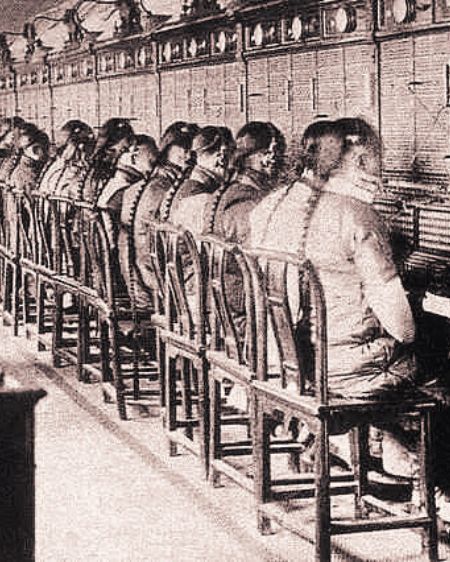Political succession in authoritarian regimes is perilous. An under-explored aspect of this challenge is the conflict of interest between new leaders and the ruling coalition they inherit from their predecessor right after the transition of power. Using original data on minor emperors and regents, we show that female regents, who were culturally protected from political purges but also discouraged from seizing power, can mitigate the two-sided commitment problems and enhance political stability for the young emperor.


The impact of modern information technology on state capacity is relatively underresearched. This paper explores the introduction of the telegraph in the late 19th-century China, the purpose of which were mostly military, to quantify the impact of information technology on state’s capacity to obtain local information about natural disasters and to provide famine relief.


Nations are products of modernity, but they also have historical roots. In the conquest of China in the mid-17th century, the Manchu-led Qing government oppressed the Han Chinese, the native population of China. Two centuries later, when modern newspaper technology became available, revolutionary propagandists exploited these events, reframing the political repression as ethnic conflict to ignite nationalist fervor.


This paper examines the transition from limited to open-access societies, focusing on early and high-Tang China (618–906). Using a dataset of 1,261 marriages from 618 to 755, we find that Empress Wu’s rise to power in 674—the first and only female emperor in Chinese history—positively impacted upward mobility. After 674, men from common and poor clans were more likely to marry into elite clans. This increase in inter-class marriages was primarily driven by Empress Wu’s expansion of national civil examinations, which strengthened her legitimacy and created new opportunities for social advancement.


This study exploits a special historical case-openings of treaty ports in 19th-century China to examine how upper-tail human capital, quantified via book creation, impacted modernization when facing external pressures. Employing a prefecture-level panel dataset from 1840 to 1904, the study establishes book density, indicative of knowledge endowment, as a significant and positive predictor of modern firm entry following the opening of treaty ports. To understand the mechanism, a critical aspect lies in understanding the Civil Service Examination (keju), an indigenous institution that historically dominated talent accumulation and allocation in China. By integrating data with keju, we find that exposure to Western influence mobilized the segment of upper-tail human capital at the bottom or outside of the keju system into entrepreneurship. This paper illustrates the dynamics between indigenous institutions and external pressures.


Christian missionaries are shown to have contributed to the historical rise of international trade by bridging the information gap between Europe and unfamiliar overseas lands from the 16th century onward. To prove that they unintentionally mitigated information barriers for early traders, we focus on the experience of historical China where European missionaries arrived from 1580 onward but maritime foreign trade was largely banned between 1371 and 1842. Our analysis demonstrates that following China’s forced opening for international trade in 1842, regions with longer past missionary presence typically bought foreign goods earlier, imported more in terms of both value and goods diversity, and exported more local products, as these places had more foreign interactions and appeared more frequently in the missionaries’ letters and publications back in Europe. Our findings substantiate the importance of the information channel through which the missionaries accelerated trade globalization.


We study the organizational demography of the Qing civil service from 1830 to 1911. Before the 20th century, the Qing bureaucracy was one of the largest non-military organizations in the world in terms of numbers of regular employees. At any given time, approximately 13,000 officials held formal appointments. We present the basic features of its organizational demography using data on nearly all civil officials with formal appointments from 1830 to 1912. We make use of longitudinally linked records of officials in the China Government Employee Database – Jinshenlu (CGED-Q JSL) to reconstruct rates of exit from service, the career lengths of officials, and the number of years since first appointment for currently serving officials. While previous studies of the Qing have examined turnover in specific types of posts, they have not considered the dynamics of complete careers. We find that exit rates in the first year of service were high and then low and stable afterward. While most officials only served for a short time, currently serving officials were relatively experienced. We also show that rates of exit from service declined for much of the last half of the 19th century, and then increased in the first decade of the 20th century. Declining turnover in the last half of the 19th century would have reduced opportunities for degree holders seeking posts and for officials seeking promotion at a time when the number of holders of purchased degrees competing for posts was increasing. We also compare different categories of officials. The results not only illuminate basic features of the organizational demography of Qing officialdom, but also provide a baseline for interpreting results from case studies of specific groups of officials or specific time periods.


In process mining, extensive data about an organizational process is summarized by a formal mathematical model with well-grounded semantics. In recent years a number of successful algorithms have been developed that output Petri nets, and other related formalisms, from input event logs, as a way of describing process control flows. Such formalisms are inherently constrained when reasoning about the probabilities of the underlying organizational process, as they do not explicitly model probability. Accordingly, this paper introduces a framework for automatically discovering stochastic process models, in the form of Generalized Stochastic Petri Nets. We instantiate this Toothpaste Miner framework and introduce polynomial-time batch and incremental algorithms based on reduction rules. These algorithms do not depend on a preceding control-flow model. We show the algorithms terminate and maintain a deterministic model once found. An implementation and evaluation also demonstrate feasibility.





